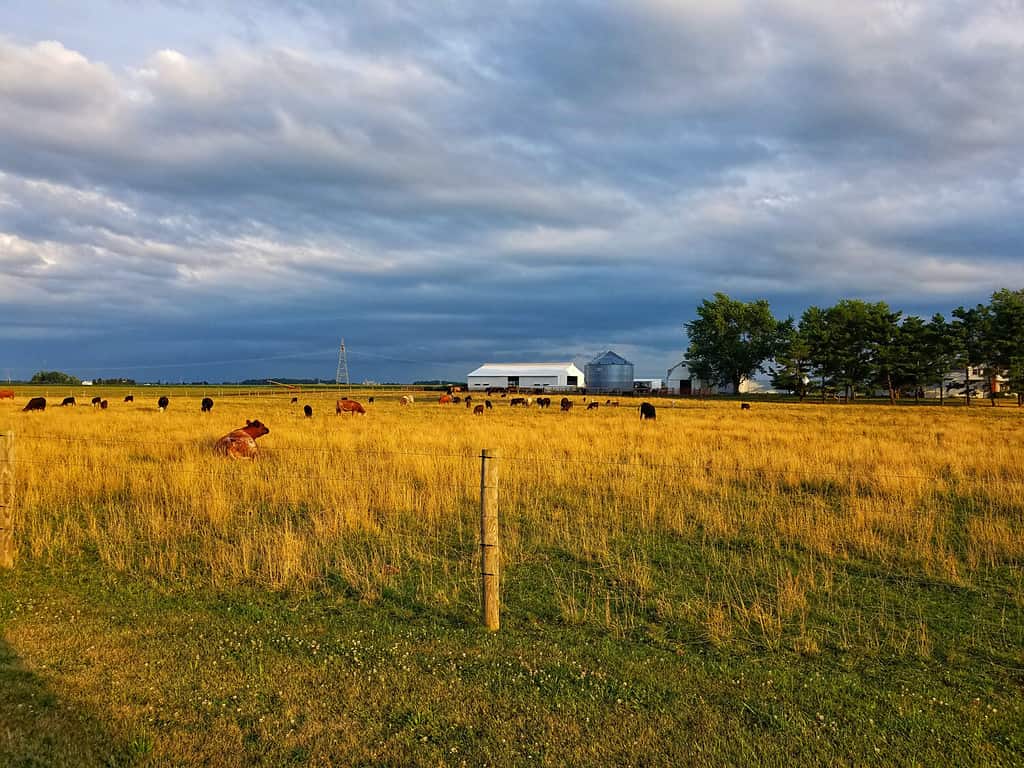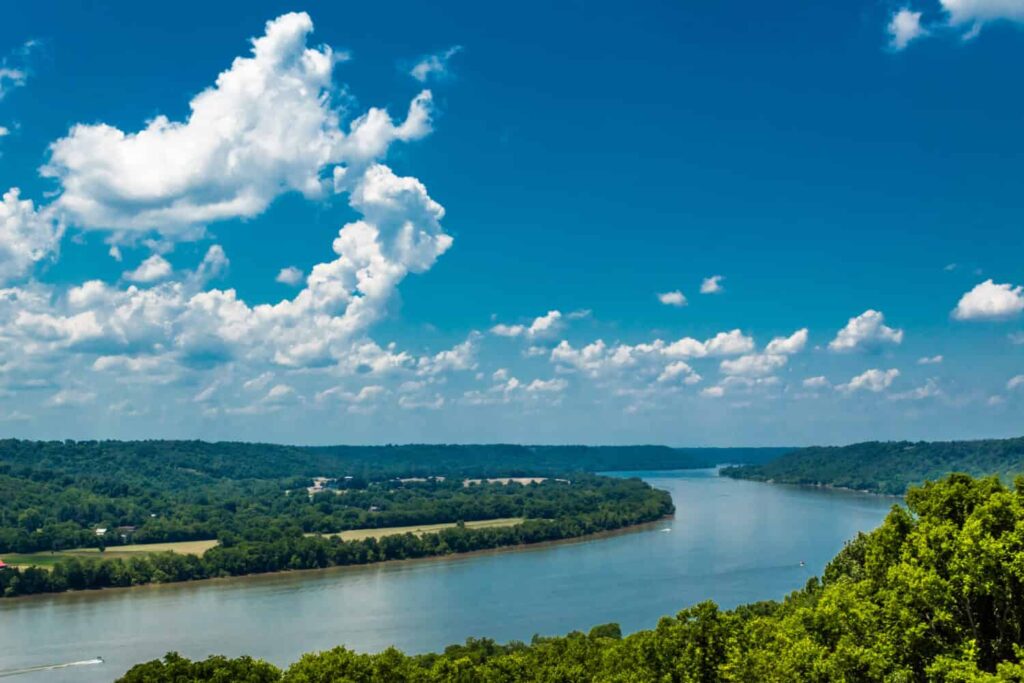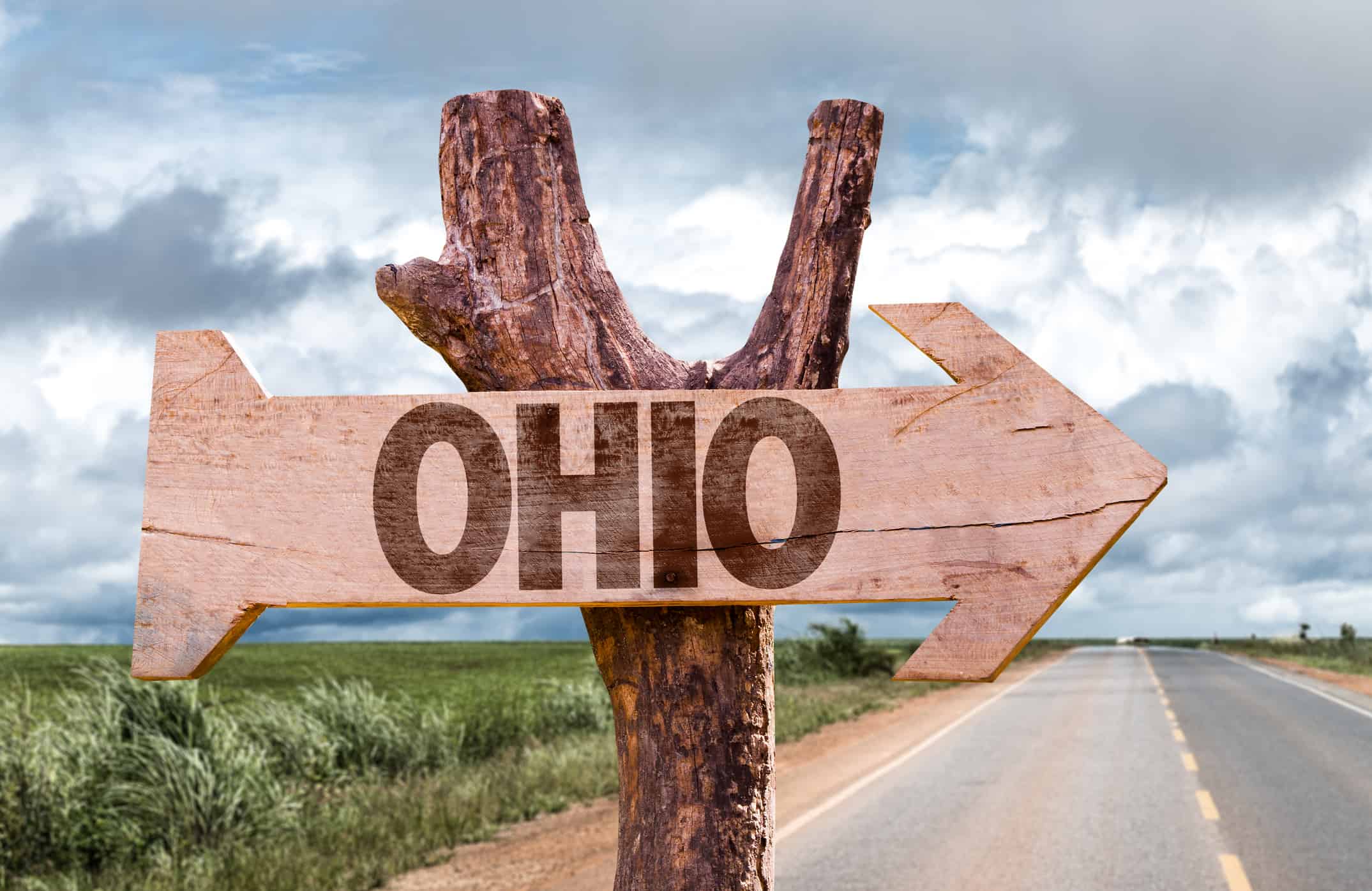Located in the Midwest, Ohio is a state rich in history, culture, and diverse landscapes. From its early beginnings to its modern urban centers, the state’s story is deeply intertwined with the growth of the United States.
Ohio’s Geographical Location
Ohio’s central location within the United States positions it as a connection between the East Coast and the Midwest. Bordered by Lake Erie to the north, the state is characterized by a diverse range of geographical features. The state’s landscape transitions from the flat, fertile plains of the northwest to the rolling hills of the central and southeastern regions.
Below is a map showing the location of Ohio, specifically, the city of Columbus.
Ohio’s Historical Journey
The history of Ohio involves Native American civilizations, European exploration, territorial struggles, and the eventual emergence of the state as an integral part of the United States. The state’s journey from the untamed wilderness of the frontier to a thriving state showcases the resilience, adaptability, and determination of its inhabitants.
Early Encounters and Native Presence
Long before European explorers arrived, Ohio’s lands were inhabited by various Native American tribes, including the Shawnee, Iroquois, and Miami. The fertile soil, abundant waterways, and diverse ecosystems of the region attracted indigenous communities. These factors also shaped their way of life and cultural practices.
European Exploration and Settlement
The arrival of French and British explorers in the 17th and 18th centuries marked the beginning of European presence in the state. French traders established fur trading posts, while British colonial interests led to territorial disputes between European powers. Following the French and Indian War, the Treaty of Paris in 1763 ceded Ohio and other territories to the British.
Northwest Territory: A Turning Point
The American Revolution brought about a pivotal shift in the region’s ownership. The Treaty of Paris of 1783 awarded the Northwest Territory, which included present-day Ohio, to the United States. This vast area stretched from the Appalachian Mountains to the Mississippi River and from the Great Lakes to the Ohio River. It became a crucial chapter in the nation’s westward expansion.

October at Berea Falls, Cleveland, Ohio
©Jason Kostansek/iStock via Getty Images
The Struggle for Statehood
As settlers began to pour into the Northwest Territory, the state’s population grew, and the desire for statehood gained momentum. The Northwest Ordinance of 1787 provided a framework for the organization of new states in the territory. This ensured certain rights and freedoms for its inhabitants. The Ordinance’s principles, including the prohibition of slavery, set the stage for Ohio’s development.
In 1802, Ohio’s population finally reached the required threshold for territorial status, leading to a petition for statehood. On February 19, 1803, President Thomas Jefferson signed the act that granted Ohio statehood. The state’s journey toward statehood reflected the evolving ideals of the young nation. This included the promotion of democracy, individual rights, and a commitment to a representative government.
A Land of Presidents and Innovators
Ohio’s role in the United States extended beyond its admission as the 17th state. The state’s fertile lands also attracted pioneers and settlers, and its location as a crossroads of transportation bolstered its economic growth. Ohio’s rich farmlands contributed to its nickname, the “Buckeye State,” while its position as a gateway to the West facilitated trade and development.
The state’s influence also reached the highest echelons of power. This is because Ohio produced several U.S. presidents, including Ulysses S. Grant, Rutherford B. Hayes, James A. Garfield, Benjamin Harrison, William Howard Taft, and Warren G. Harding. Ohio’s contributions to innovation and industry have also been significant, with Dayton’s Wright brothers pioneering aviation and the state’s manufacturing prowess shaping the state’s economy.

Lake Erie coastline and sandy water due to erosion in Ohio.
©IanSkylake17/Shutterstock.com
Bordering States of Ohio
Ohio’s geographical location in the heart of the Midwest places it in close proximity to several neighboring states, each contributing to the region’s cultural, economic, and historical dynamics.
Indiana: A Shared Heritage
To the west of Ohio lies Indiana, a state with which Ohio shares historical, economic, and cultural ties. The two states were both part of the Northwest Territory, and their early development was also intertwined. As pioneers and settlers ventured westward, they often passed through Ohio on their way to Indiana. The cities of Cincinnati and Indianapolis have long-standing connections, with trade routes and transportation networks linking the regions. The Ohio River, which flows along the southern border of Indiana, has been a historic connection for commerce and communication between the two states.
Kentucky: The River Connection
To the south, the Ohio River serves as a natural border between Ohio and Kentucky. The river’s presence has created a significant historical and economic relationship between the two states. The Ohio River played a vital role in the movement of people and goods, enabling trade and communication. During the 19th century, the Underground Railroad used the river as a route to freedom for escaped slaves, further highlighting the river’s role in shaping history. The cities of Cincinnati and Louisville, located along the river, have historical ties that extend beyond state lines.
West Virginia: A Shared Appalachian Heritage
To the southeast of Ohio lies West Virginia, a state with which Ohio shares both cultural and geographic ties. The Appalachian Mountains extend through both states, contributing to a shared heritage as well as shared natural beauty. The rugged terrain has shaped the way of life for many communities, and the coal mining industry has been a common thread in both Ohio and West Virginia. The town of Wheeling, West Virginia, and the city of Steubenville, Ohio, are located near the shared border and have connections dating back to the early 19th century. The presence of the Ohio River has also facilitated interaction between the two states.

Hancock County, Ohio, where a field contains grazing cows right before the approaching storm.
©Elizabeth Gossman/Shutterstock.com
Pennsylvania: A Blend of Urban and Rural
To the east of Ohio, Pennsylvania shares a border with the state that spans from Lake Erie to the Ohio River. While the two states have distinct cultural and geographic characteristics, their connections are evident in the shared urban and rural landscapes along the border. The city of Pittsburgh, Pennsylvania, and the cities of Youngstown and East Liverpool, Ohio, have historical ties to the steel industry and manufacturing. The region’s history of industrialization and transportation networks, therefore, has led to cross-state collaborations and exchanges.
Michigan: Sharing a Great Lake
While Ohio does not share a direct land border with Michigan, its northernmost point is situated along Lake Erie, which connects it with the state of Michigan. Lake Erie serves as a connection between the two states for trade, recreation, and environmental collaboration. The lake’s shores are dotted with cities and communities that share a connection because of their proximity to this lake.
Livability and Quality of Life in Ohio
Ohio’s appeal as a place to live stems from a combination of factors. The state offers a balanced mix of urban and rural environments, providing residents with a range of lifestyle options. Major cities like Columbus, Cleveland, and Cincinnati also offer cultural amenities, employment opportunities, and a vibrant arts scene. Meanwhile, smaller towns and rural areas provide a more serene and close-knit community atmosphere.

Boat shipping into the sunset on one of the Great Lakes: Lake Erie, Cleveland, Ohio
©Thomas Leikam/Shutterstock.com
Ohio’s Climate: Seasons of Change
Ohio’s climate is a reflection of its geographical location in the Midwest. It is characterized by distinct seasons that offer a dynamic experience. Because the state stretches from the shores of Lake Erie in the north to the Appalachian foothills in the south, its climate varies from region to region.
Four Seasons of Ohio
Ohio experiences four distinct seasons: spring, summer, fall, and winter. Each season contributes to the state’s diverse charm and offers residents and visitors a range of activities and experiences. Spring is a time of rebirth and renewal. This is because the temperatures gradually warm and flora awakens from its winter slumber. Colorful blooms and blossoms transform the landscapes and residents eagerly embrace the opportunity to spend more time outdoors.
Summer in Ohio is marked by warm temperatures and higher humidity levels. Average temperatures range from the mid-70s to mid-80s˚F (24-30°C), which is very pleasant for most. Ohioans and tourists flock to the state’s lakes, rivers, and parks to enjoy outdoor activities during this time. From boating on Lake Erie to exploring hiking trails, summer is a time of exploration and relaxation.
Fall is perhaps one of the most celebrated seasons in Ohio. As temperatures begin to cool, the state’s forests transform into a vibrant rainbow of red, orange, and gold. The crisp air, coupled with apple picking and hayrides, makes fall a favorite season for many residents. As leaves blanket the ground, Ohio becomes a picture-perfect scene of autumnal beauty.
Winter in Ohio can vary in intensity, with the northern parts of the state experiencing more snowfall due to the influence of Lake Erie. Winter temperatures range from the low 20s to high 30s˚F (-6 to 4°C), providing ample opportunities for outdoor activities like skiing and ice skating. While winters can be cold, they also create a sense of coziness as residents gather indoors for holiday celebrations and warm meals.

A high view of the bend in Ohio River, surrounded by a blue sky and clouds.
©Corey B Stevens/Shutterstock.com
Lake Effect and Regional Variations
Lake Erie also has a significant impact on Ohio’s climate, particularly in the northern part of the state. The lake’s moderating influence can lead to milder temperatures along its shores. But it can also lead to increased precipitation, particularly in the form of lake-effect snowfall during the winter months. Areas farther inland experience fewer of these lake-effect effects, leading to slightly different weather patterns.
Ohio’s Notable Contributions and Achievements
Ohio has rich cultural, historical, and economic achievements that have left an essential mark on the nation. The state is often referred to as the “Mother of Presidents” due to the significant number of U.S. presidents who hailed from Ohio, as mentioned before.
Ohio is also renowned for its contributions to aviation, because it was the birthplace of the Wright brothers. The state’s manufacturing legacy, particularly in the automotive industry, has also shaped the nation’s economy. Additionally, Ohio’s cultural institutions, universities, and sports teams also contribute to the state’s diverse and dynamic identity.
Ohio’s Vibrant Legacy
In conclusion, Ohio’s geographical location, historical significance, and cultural diversity contribute to its status as a dynamic and thriving state. From the early days of westward expansion to its modern urban centers, Ohio’s journey reflects the broader story of the United States itself.
Thank you for reading! Have some feedback for us? Contact the AZ Animals editorial team.








